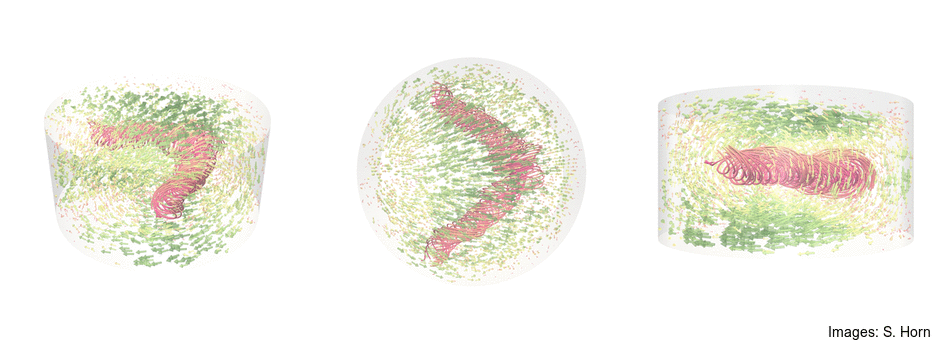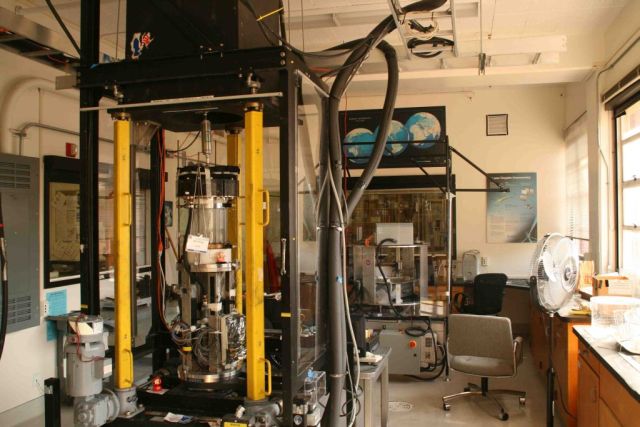
Situated in UCLA’s Department of Earth, Planetary and Space Sciences (EPSS), we study fluid dynamics and magnetohydrodynamics occurring in geophysical settings. In particular, we investigate fundamental behaviors of fluid processes in planetary cores and atmospheres using unique state-of-the-art laboratory devices (designed and built on-site) with associated numerical simulations. Our results are relevant to interpretations of planetary magnetic fields as well as large-scale jet systems on gas planets.
SPINlab
In order to study turbulent convection and magnetoconvection occurring in planetary cores and stellar convection zones, in 2004, we designed and built the Rotating Magnetoconvection Device (aka, RoMag). RoMag consists of an upright cylindrical tank with a fixed 20 cm diameter and variable height. It sits on a rotating pedestal that can spin up to 70 rotations per minute. The tank is heated from below and cooled from above to drive thermal convection. An electromagnet surrounding the rotating tank can impose a uniform 1300 Gauss vertical magnetic field.
In our simulations, we use water, which provides data relevant to our understanding of planetary dynamo and deep convection in the gas planets, or liquid metal gallium, which more closely approximates the physical properties of planetary cores and stellar convection zone materials. The variable tank height enables us to take data over broad parameter ranges and isolate changes in system behavior. Recently, we designed a similar large-scale version of the device without an electromagnet (aka, NoMag) to simulate strongly turbulent processes in geophysical settings.
To simulate planetary bodies that both rotate and oscillate, in 2007, we designed and constructed a unique libration experiment. Using particle image velocimetry (PIV) measurements, we are able to study resonant wave interactions driven by libration.
Research funding for our lab has been provided by the NSF Geophysics Program, NSF’s Instrumentation and Facilities Program, NASA’s Planetary Geology and Geophysics Program and NASA’s Planetary Atmospheres Program.

The UCLA SPINLab is a 900 square foot experimental fluid dynamics facility. SPINLab facilities, equipment and technical capabilities include:
- Custom heavy-duty rotary table capable of stable rotation over the range 0.3 Ð 100 rpm
- Walker LDJ 35 cm bore solenoidal electromagnet with 10-1300 gauss field, uniform to +/-0.5% field over 20 cm diameter by 25 cm volume
- MetFlow UVP-Duo MX ultrasonic Doppler velocimetry system capable of measuring flow velocities in transparent or opaque fluids (i.e., liquid metals) down to ~0.5 mm/s and over ~1 mm lengthscales
- Temperature and magnetic field sensors coupled to a National Instruments data acquisition system, capable of multiplexing over 64 channels at up to 100 Hz.
- Industrial and precision closed-loop temperature baths.
- Windows across the south wall of the laboratory as well as blackout shades that can provide over 99% darkness for sensitive flow visualization experiments
- Dedicated power capabilities of up to 400 amps of 3 phase electrical power.